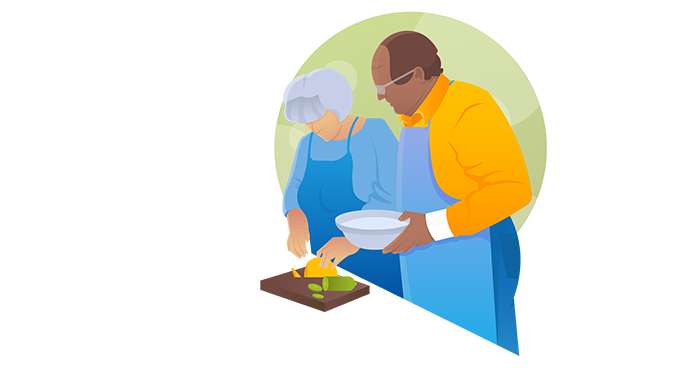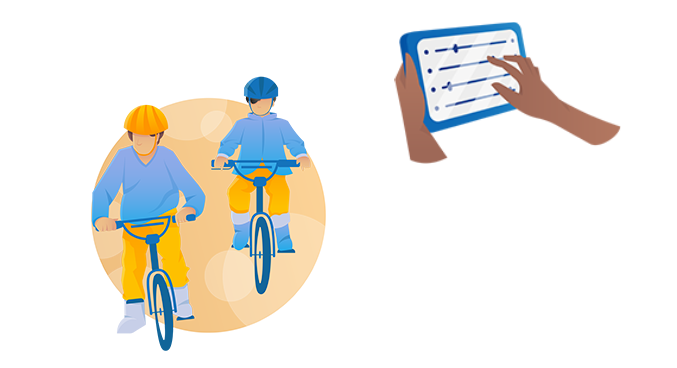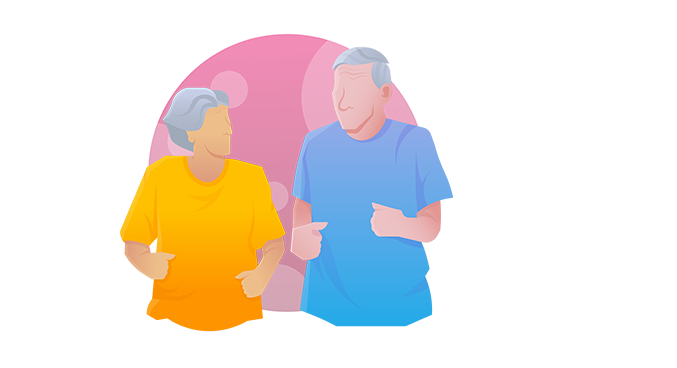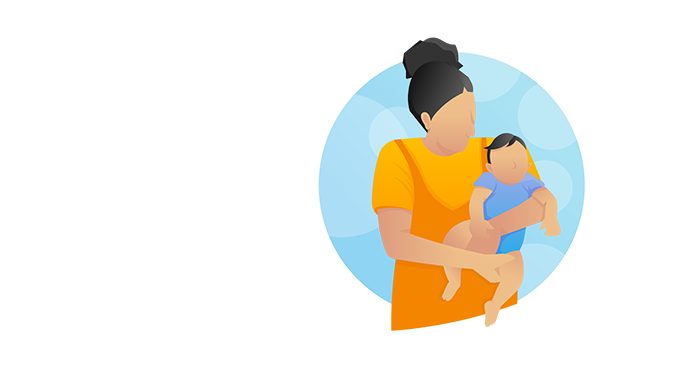Reducing the risk of dementia
Reducing dementia risk through lifestyle modification is at the forefront of dementia research. We’re collecting large scale data on critical predictors of dementia in older adults.
We’re linking risk factors with outcomes using innovative statistical methods that allow us to evaluate the health benefits of re-allocating time from one activity, or from one food group to another. This will enable real-time predictions of how dementia risk changes when time (or diet) is shifted.
For example, swapping 30 minutes of sitting for 30 minutes of exercise or increasing serves of vegetables at the expense of discretionary foods.

We’re exploring:
- Sleep
- Screen time
- Social interaction
- Cognitive behaviours
- Physical activity
- Dietary intake
- Brain structure & function
For children’s health
Children's daily physical activity and screen time behaviors have wide-ranging impacts on their physical and psychosocial health, school performance, and wellbeing. Weve led the development of national evidence-based guidelines promoting healthy physical activity and screen time for children during Outside School Hours Care.

We're also developing strategies for guideline implementation and testing the effectiveness and cost-effectiveness in trials throughout Australia.
Healthy activity for all people
How we spend our time, such as our balance between physical activity and sedentary time, is critical to our health and wellbeing. So we're measuring changes in time use and patterns of physical activity and sedentary behavior, and its associations with health and wellbeing, at critical junctions such as across the retirement transition. Our work is informing the development of lifestyle and policy interventions to address and improve health and well-being.

We’re exploring:
- Physical activity Accelerometry
- Wental wellbeing
- Health-related quality of life
- Depression & anxiety
- Anthropometry
- Sociodemographics
Helping people become more active
We're exploring new ways of helping inactive populations to become more active again. Australian mothers are reported to be twice as likely to be inactive compared to women without children. So we're exploring how we can use online social networks in physical activity interventions for postpartum women.

We’re exploring:
- Physical activity Accelerometry
- Sleep
- Depressive symptoms
- Health-related quality of life
- Body mass index


